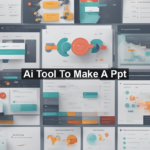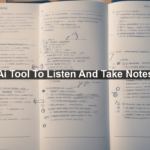Ever wondered how modern technology can seamlessly process financial statements with accuracy and speed? In today’s fast-paced world, leveraging AI tools to analyze financial statements can save you time, reduce errors, and offer deeper insights into your financial health. Whether you’re a savvy investor, a diligent CFO, or a small business owner, understanding the transformative power of AI in financial analysis is indispensable.
What is an AI Tool for Analyzing Financial Statements?
AI tools for analyzing financial statements are software solutions that utilize artificial intelligence and machine learning algorithms to interpret and process financial data. These tools can scan through complex datasets to identify trends, forecast future performance, and highlight anomalies that may require further investigation. Essentially, AI tools have the potential to revolutionize how we view and extract value from our financial information.
Why Use AI for Financial Analysis?
Simply put, AI tools offer faster, more accurate, and data-driven insights. Here are some compelling reasons to consider:
- Efficiency: Manual data analysis can be time-consuming and prone to human error. AI tools can process vast amounts of data in a fraction of the time.
- Accuracy: Machine learning algorithms can identify patterns and anomalies that a human might miss, offering unparalleled precision.
- Cost-Effective: Reducing the need for extensive manual labor can significantly cut operational costs.
- Predictive Analysis: AI can forecast future trends, helping you make informed decisions based on predictive data.
How Does it Work?
AI tools work by leveraging sophisticated algorithms to analyze data. Here’s a simplified breakdown of the process:
Data Collection
The first step involves collecting data from multiple sources, such as financial statements, invoices, and other accounting records. The AI tool will typically integrate with existing accounting software or databases to fetch this information.
Data Processing
Next, the data is processed and cleaned. This involves removing duplicates, handling missing values, and ensuring that the data is in a format that the AI can analyze.
Analysis
Once the data is ready, the AI tool uses machine learning algorithms to analyze it. This involves looking for patterns, calculating key metrics, and identifying any anomalies that might signal a problem.
Reporting
Finally, the AI tool generates reports that summarize its findings. These reports can include visualizations like graphs and charts and summaries that highlight key insights.
Key Features to Look For
When choosing an AI tool to analyze financial statements, it’s essential to consider the following features:
- Integration Capabilities: Ensure the tool can seamlessly integrate with your existing financial software.
- Customizability: The ability to tailor the tool to your specific needs can be a huge advantage.
- Real-Time Analysis: Real-time data processing can provide up-to-the-minute insights.
- Security: Financial data is sensitive. Ensure the tool has robust security measures in place to protect your information.
Real-World Applications
Here are some practical applications of AI tools in financial analysis:
For Small Businesses
AI tools can help small businesses manage their finances more effectively. By automating routine tasks like invoice processing and budget tracking, these tools allow business owners to focus on growth and strategy.
For Investors
Investors can use AI to conduct detailed financial analysis of potential investments. This can include analyzing the financial statements of public companies, assessing market trends, and conducting risk assessments.
For Large Corporations
Larger organizations can benefit from the predictive analytics capabilities of AI tools. These tools can be used to forecast future revenues, manage large datasets, and give insights into operational efficiencies.
Challenges and Considerations
While AI tools offer numerous benefits, there are also challenges and considerations to keep in mind:
- Data Quality: The accuracy of AI-driven insights depends on the quality of the input data. Inaccurate or inconsistent data can lead to misleading results.
- Implementation Costs: Deploying AI solutions can be costly, depending on the complexity and scale of the deployment.
- Skill Requirements: Utilizing AI tools may require specialized skills or training to interpret the results accurately.
- Security Risks: As mentioned earlier, handling sensitive financial data necessitates rigorous security measures.
Conclusion
AI tools for analyzing financial statements are revolutionizing the way we handle and interpret financial data. From increasing efficiency and accuracy to providing predictive insights, the advantages are evident. However, it is essential to approach this technology with a well-rounded understanding of its capabilities and limitations. If you’re interested in gaining a deeper understanding of how AI is impacting the financial sector, consider reading more from Forbes and the Harvard Business Review.
Embracing AI-driven financial analysis can propel your financial management practices into the future, equipping you with the tools needed for more informed decision-making and sustained growth.











